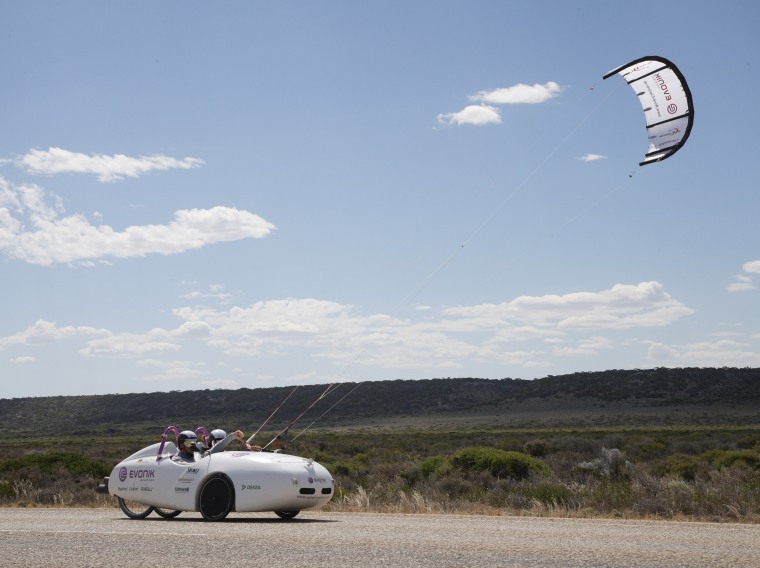
A lightweight carbon-fiber car packing high-tech lithium-ion batteries and a portable wind turbine cruised 3,000 miles across Australia using just $15 worth of electricity from the grid. For an added boost, the drivers used a giant kite to pull the car down the road when the wind blew in the right direction.
“They were able to supplement their lithium-ion battery power with kite power about 10 to 15 percent of the time,” Bill Bunting, a senior scientist with Evonik Industries in New Jersey, told NBC News.
Evonik built the car to showcase its battery and lightweight materials technologies. The Wind Explorer is currently on display at the company headquarters. The carbon-fiber body weighs 200 pounds. Batteries add another 200 pounds and the portable turbine about 70 more, Bunting noted.
The addition of two average-sized people to drive the car and fly the kite brings the total package up to around 1,000 pounds, making it a showcase of what’s possible with today’s lightweight materials.
Automakers are racing to drop pounds off their cars to meet new fuel economy standards that require a fleet average of 54.5 miles per gallon by 2025. A general rule of thumb is a gain in fuel efficiency of a mile per gallon for every 100 pounds of weight lost.
General Motors, for example, is aiming to incorporate more lightweight magnesium in parts such as doors and trunk lids. Magnesium is 75 percent lighter than steel and 33 percent lighter than aluminum, the company said.
In addition to the carbon fiber in the Wind Explorer frame, Evonik also makes “some special chemical materials that go into the rubber tires … that basically allows the tires to roll along with the least amount of energy while still having the most amount of traction and durability,” Bunting said.
The car’s lithium ion batteries produce enough energy to travel 175 to 225 miles a day. There was enough wind to completely recharge the batteries overnight about 60 percent of the time.
“Occasionally, they plugged into the Australian power grid and that’s where the dollar figure of less than $15 worth of electricity comes from to travel all the way across Australia,” Bunting said.
You can check out the car in the video below.
– via Technabob
John Roach is a contributing writer for NBC News. To learn more about him, check out his website. For more of our Future of Technology series, watch the featured video below.